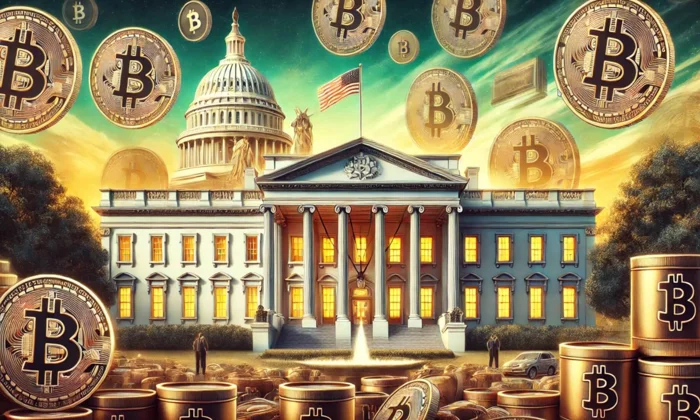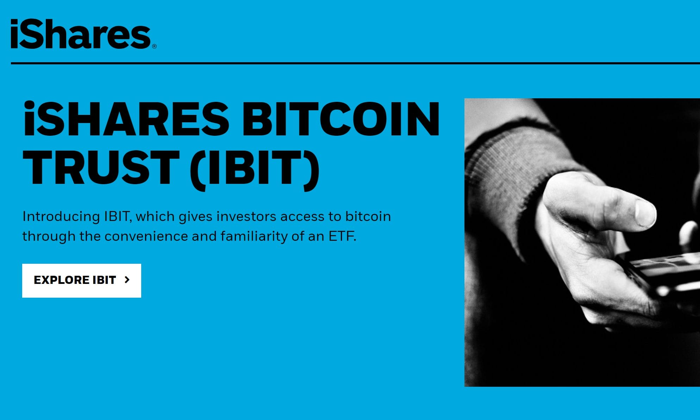Trump’s trade war impact on crypto has sent ripples through the digital asset landscape, revealing just how interconnected global economic policies are with the volatile crypto market. As tariffs on imports from China, Canada, and Mexico were announced, the crypto market faced significant turmoil, leading to a staggering loss of $2 billion in a single day. This market volatility underscores the economic impact of tariffs, as traders react swiftly to news that could signal recession risks and inflation pressures. Notably, Bitcoin price fluctuations have been exacerbated by these geopolitical developments, prompting investors to reconsider their strategies in an uncertain economic climate. Ultimately, while the trade war aims to protect domestic industries, its unintended consequences could reshape the future of cryptocurrencies in a rapidly evolving financial landscape.
The repercussions of Trump’s trade policies on the cryptocurrency sector are becoming increasingly evident, as the nexus between international trade and digital currencies grows stronger. The introduction of tariffs has not only intensified market volatility but also raised concerns about broader economic repercussions, including the potential for recession and inflation risks. As stakeholders navigate this unpredictable environment, understanding the intricate relationship between tariffs, economic stability, and crypto valuations is essential. Investors are now more attuned to the implications of trade negotiations, as these factors directly influence market confidence and asset performance. The current climate compels a reassessment of strategies within the crypto market, particularly as it grapples with the fallout from these significant policy shifts.
The Ripple Effect of Trump’s Trade War on Crypto Markets
Trump’s trade war has created a ripple effect across various sectors, particularly impacting the volatile crypto markets. The imposition of tariffs has led to increased uncertainty, which in turn has prompted sharp fluctuations in Bitcoin prices. As investors react to news about tariffs and trade relations, the crypto market has seen significant volatility, with billions wiped off market valuations within hours. This correlation between trade policy and crypto performance underscores the sensitivity of digital assets to macroeconomic shifts, with market participants closely monitoring developments in the trade war.
Moreover, the impact of Trump’s trade war has been exacerbated by the interconnectedness of global economies. As tariffs are imposed on key trading partners like China, Canada, and Mexico, the resulting economic strain can lead to decreased consumer spending and a potential recession. This economic environment creates an atmosphere of fear and speculation in the crypto markets, leading to increased sell-offs and market instability. Consequently, the fluctuations in Bitcoin and other cryptocurrencies are not merely reflections of crypto-specific news, but rather an indication of broader economic conditions influenced by trade policies.
Understanding Crypto Market Volatility Amid Tariff Implementation
The volatility of the crypto market is not a new phenomenon; however, the recent trade tensions have intensified these fluctuations. Tariffs, as a form of economic protectionism, inherently create uncertainty in the markets. When President Trump announced the tariffs, the immediate reaction was a drastic drop in crypto values, with a reported loss of $2 billion. This event highlights how susceptible digital assets are to external economic factors, as traders react to news that may not directly relate to the cryptocurrency itself.
Additionally, the relationship between tariffs and recession risks is critical in understanding why crypto markets are so reactive. As the costs of imported goods rise due to tariffs, consumer spending may decline, leading to an economic slowdown. This potential recession not only affects traditional financial markets but also spills over into the crypto sector, resulting in increased market volatility. Investors may retreat to safer assets, further driving down crypto prices, as seen during the initial tariff announcements.
Inflation Risks and Their Impact on Bitcoin Price Fluctuations
Inflation risks associated with tariffs are a significant concern for both traditional and digital asset markets. When tariffs are enacted, the cost of goods tends to rise, which can lead to higher inflation rates. For cryptocurrencies like Bitcoin, this scenario can create a dual-edged sword. On one hand, Bitcoin is often viewed as a hedge against inflation, attracting investors seeking to preserve value. On the other hand, if inflation leads to decreased consumer confidence and spending, the demand for Bitcoin may also diminish, resulting in price volatility.
The Federal Reserve’s response to inflationary pressures complicates the situation further. As they consider tightening monetary policy to combat rising prices, the crypto market may experience even more volatility. Higher interest rates could discourage investment in riskier assets, including cryptocurrencies, pushing prices down. Thus, the interplay between tariffs, inflation risks, and Federal Reserve policies creates a complex environment for Bitcoin price fluctuations, leaving investors to navigate a landscape marked by uncertainty.
The Economic Impact of Tariffs on Global Trade Relations
The economic impact of tariffs extends far beyond the immediate effects on consumer prices and domestic industries. As the U.S. engages in trade wars with significant partners, the repercussions can lead to diminished trade relations and economic contraction. For countries like Canada and Mexico, the potential job losses and reduced economic activity may have long-lasting effects. The interconnectedness of global trade means that tariffs can lead to retaliatory measures, further complicating the economic landscape.
For the crypto market, these strained trade relations can foster an environment of uncertainty. Investors often seek stability, and when international trade is jeopardized, the appetite for riskier assets like cryptocurrencies may diminish. This, in turn, can lead to increased volatility in digital asset valuations, as traders respond to the ebb and flow of geopolitical developments and economic forecasts. Ultimately, understanding the economic impact of tariffs is essential for investors looking to navigate the complexities of the crypto landscape.
The Role of Safe-Haven Assets in Times of Trade Uncertainty
In times of trade uncertainty, traditional safe-haven assets like gold often see increased demand, as investors seek refuge from market volatility. The recent surge in gold prices, reaching all-time highs, reflects a broader trend wherein investors gravitate towards assets perceived as stable during tumultuous economic periods. This shift highlights a critical aspect of the market: as tariffs raise concerns about inflation and recession, safe-haven assets become more attractive compared to riskier investments like cryptocurrencies.
The contrast between gold and cryptocurrencies during these turbulent times sheds light on the evolving perceptions of value. While Bitcoin and other digital assets were initially heralded as safe havens, the recent volatility linked to trade wars has challenged this narrative. As market participants reassess their risk tolerance amidst rising economic uncertainty, traditional assets like gold may regain their status as the primary safe-haven investment, leaving cryptocurrencies to navigate the stormy seas of market speculation.
Future Outlook: Navigating Trade Policies and Crypto Investments
The future outlook for the crypto market amidst ongoing trade policies is uncertain. If the U.S. continues to impose aggressive tariffs without reaching trade agreements, the resulting economic fallout could further destabilize both traditional and digital asset markets. Investors must be prepared for a landscape where market volatility may persist, driven by geopolitical tensions and macroeconomic factors. Understanding the implications of trade policies will be crucial for making informed investment decisions in the crypto space.
Moreover, as policymakers grapple with the economic consequences of tariffs, the interplay between regulation and market behavior will be pivotal. Regulatory clarity could provide some support for the crypto market, but sustained trade conflicts may overshadow these positive developments. Investors should remain vigilant and closely monitor economic indicators, as the broader economic impact of tariffs and potential recession risks will significantly influence the performance of cryptocurrencies in the months to come.
The Interplay Between Consumer Confidence and Crypto Valuations
Consumer confidence plays a vital role in shaping economic activity, and its fluctuations can have direct implications for crypto valuations. When tariffs are introduced, they often lead to increased prices and economic uncertainty, which can erode consumer confidence. As individuals feel less secure about their financial situations, their willingness to invest in volatile assets like cryptocurrencies may decline. This psychological factor is crucial in understanding the broader market dynamics at play.
Furthermore, a drop in consumer confidence can lead to decreased spending, which, in turn, impacts overall economic growth. As the economy slows, the crypto market may react negatively, with investors pulling back on their investments in digital assets. This cyclical relationship between consumer behavior and crypto valuations highlights the importance of monitoring economic indicators and sentiment, as they can provide valuable insights into the potential direction of the crypto market amid ongoing trade tensions.
Tariffs and the Future of Crypto Regulation
The relationship between tariffs and the future of crypto regulation is becoming increasingly relevant as policymakers seek to navigate the complexities of an evolving financial landscape. As the U.S. government implements tariffs that impact global trade, the regulatory framework surrounding cryptocurrencies may also come under scrutiny. Regulatory clarity is essential for fostering a stable environment for crypto investments, and the interplay between trade policies and regulation will be critical in determining how the market evolves.
Additionally, the potential for increased regulatory scrutiny in response to economic pressures could lead to a more defined framework for cryptocurrencies. This could benefit the market by providing a clearer roadmap for compliance and investor protections. However, if trade tensions escalate further, the focus on regulation may shift, potentially stifling innovation within the crypto space. As such, stakeholders in the crypto market must remain engaged with regulatory developments and advocate for a balanced approach that considers both the economic impact of tariffs and the need for a supportive regulatory environment.
Investing Strategies in a Tariff-Dominated Environment
In a tariff-dominated environment, investors must adapt their strategies to navigate the uncertainties that come with fluctuating trade policies. Diversification remains a cornerstone of a resilient investment strategy, allowing investors to spread risk across various asset classes. This approach is particularly crucial for those involved in the crypto market, where volatility can be pronounced during times of economic uncertainty. By holding a mix of assets, including traditional safe havens like gold alongside cryptocurrencies, investors can better manage risk.
Moreover, staying informed about macroeconomic trends and trade developments is essential for making timely investment decisions. As tariffs can lead to rapid shifts in market sentiment, investors should monitor news cycles and economic indicators closely. This proactive approach enables traders to adjust their portfolios in response to changing conditions, potentially capitalizing on opportunities that arise from market volatility. Ultimately, adopting flexible and informed investment strategies will be key to thriving in an environment shaped by ongoing trade tensions.
Frequently Asked Questions
How does Trump’s trade war impact crypto market volatility?
Trump’s trade war has significantly heightened crypto market volatility. The announcement of tariffs has led to immediate reactions in the crypto space, causing sharp price fluctuations, as seen with Bitcoin’s drop of over $6,000 following tariff news. Such macroeconomic shifts underscore the vulnerability of the crypto markets to changes in trade policy.
What are the potential inflation risks associated with Trump’s trade war and its effect on crypto?
The imposition of tariffs can lead to increased costs for imported goods, which may accelerate inflation. This inflationary pressure can erode consumer purchasing power and dampen overall economic growth, creating an unfavorable environment for cryptocurrencies, often leading to increased market volatility and price fluctuations.
Can tariffs and recession risks directly influence Bitcoin price fluctuations?
Yes, tariffs and the associated recession risks can directly influence Bitcoin price fluctuations. For instance, when Trump announced tariffs, Bitcoin’s price reacted sharply, reflecting the market’s sensitivity to economic uncertainty and potential recession, which can lead to decreased investment and higher volatility in the crypto market.
What is the economic impact of tariffs on the cryptocurrency market?
The economic impact of tariffs on the cryptocurrency market includes increased uncertainty and heightened volatility. As tariffs constrict consumer spending and raise production costs, the resulting economic slowdown can lead to reduced investment in digital assets, thereby amplifying crypto market volatility.
How do Trump’s trade war policies affect investor sentiment in the crypto space?
Trump’s trade war policies create a climate of uncertainty, which negatively affects investor sentiment in the crypto space. As tariffs lead to economic concerns, investors may retreat from riskier assets like cryptocurrencies, causing further market volatility and impacting overall valuations.
What are the implications of Trump’s trade war for the long-term stability of cryptocurrencies?
The implications of Trump’s trade war for the long-term stability of cryptocurrencies are concerning. Increased tariffs can lead to economic slowdowns, inflation risks, and reduced consumer confidence, all of which contribute to heightened volatility and uncertainty in the crypto markets.
How does the relationship between tariffs and the crypto market reflect broader economic trends?
The relationship between tariffs and the crypto market reflects broader economic trends by illustrating how macroeconomic policies can directly impact emerging asset classes. As tariffs increase costs and economic uncertainty rises, the resulting volatility in the crypto market mirrors the overall economic sentiment, showcasing the interconnectedness of traditional finance and digital assets.
What role do macroeconomic factors play in the valuation of cryptocurrencies during Trump’s trade war?
Macroeconomic factors play a crucial role in the valuation of cryptocurrencies during Trump’s trade war. Tariffs create economic uncertainty, which can lead to fluctuations in investor confidence and capital flows, directly affecting cryptocurrency prices and contributing to increased market volatility.
How can investors mitigate risks associated with Trump’s trade war and its impact on crypto?
Investors can mitigate risks associated with Trump’s trade war and its impact on crypto by diversifying their portfolios, staying informed about macroeconomic developments, and considering safe-haven assets alongside cryptocurrencies. This strategy can help balance potential losses from crypto market volatility during periods of economic uncertainty.
What are the potential long-term effects of Trump’s trade war on the crypto market?
The potential long-term effects of Trump’s trade war on the crypto market include sustained volatility, changes in regulatory environments, and shifts in investor sentiment. If tariffs lead to prolonged economic downturns, the crypto market may struggle to gain stability, impacting its growth and adoption.
| Key Point | Details |
|---|---|
| Tariffs and Their Impact | Tariffs on imports can lead to increased consumer prices, reducing spending and potentially pushing the economy towards recession. |
| Job Losses | Potential job losses of 0.25% in the US and up to 3% in Canada and Mexico due to proposed tariffs. |
| Crypto Market Volatility | Crypto markets reacted sharply to tariff announcements, with significant losses on the day of the announcement and subsequent fluctuations based on news. |
| Inflation Concerns | Tariffs may lead to higher inflation as import costs rise, which can reduce consumer purchasing power and further affect the economy. |
| Safe-Haven Assets | In times of market instability, traditional safe-haven assets like gold have seen increased demand, contrasting the volatility in crypto markets. |
| Future Implications | Continued tariff imposition without concessions may lead to prolonged market volatility and the risk of recession in key economies. |
Summary
Trump’s trade war impact on crypto is profound, highlighting the growing vulnerability of digital asset markets to macroeconomic shifts. The imposition of tariffs has not only destabilized the crypto market but has also raised concerns over inflation and potential recession, affecting consumer confidence and spending. As the situation evolves, the interplay between trade policies and crypto valuations will be crucial for investors to monitor.
Trump’s trade war impact on crypto has been felt acutely in recent months, as the digital asset market grapples with heightened volatility driven by shifting macroeconomic conditions. The introduction of tariffs has not only increased the costs of imported goods but has also prompted fears of a looming recession, which can significantly affect consumer spending and investment in the crypto market. As tariffs drive economic uncertainty, Bitcoin price fluctuations have become more pronounced, reflecting broader concerns about inflation risks and the economic impact of tariffs. With the crypto market already sensitive to external shocks, the intertwining of trade policies and digital asset valuations highlights a precarious situation for investors. Understanding the implications of these trade dynamics is essential for navigating the complexities of crypto market volatility in today’s economic landscape.
The repercussions of Trump’s trade policies on the cryptocurrency sector are increasingly relevant as we observe the interplay between global trade tensions and digital currencies. With rising tariffs sparking fears of an economic downturn, the relationship between traditional finance and the evolving world of cryptocurrencies becomes even more critical. As the crypto market faces waves of uncertainty, investors must consider how trade-related developments can influence market dynamics, including potential shifts in Bitcoin’s value and the broader implications for crypto adoption. In an environment where inflation concerns loom large, the stakes are high for digital assets that thrive on stability and trust. Consequently, the ongoing trade dispute underscores the need for vigilance among stakeholders in the cryptocurrency ecosystem.















